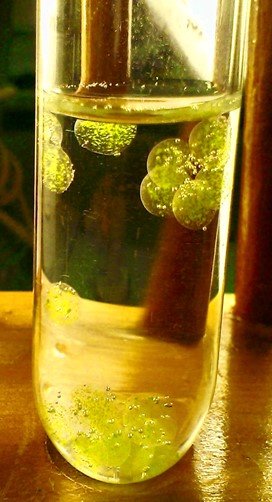|
This quiz contains a mix of SL and HL questions |
|||||||||||||||||
Q1 & 2: The image below shows a chloroplast.
|
Wikimedia Commons (edited) GNU Public License |
||||||||||||||||
1. What process occurs in location X?
|
|||||||||||||||||
2. What process does not occur in location Y?
| |||||||||||||||||
Q3 & 4. The image shows the pigments present in a plant such as spinach, identified using chromotography:
|
|
Flo~Commonswiki CC-BY-SA 2.5 |
|||||||||||||||
3. Which of the pigments is the most soluble in the given solvent?
|
|||||||||||||||||
4. The table gives the Rf values of some of the pigments. Which of the pigments would be found at position X?
|
|||||||||||||||||
| 5. The diagram shows an absorption spectrum for plant pigments.
|
|||||||||||||||||
What is the colour of light that is maximally absorbed at approx. 675 nm?
|
|||||||||||||||||
Q6+7: A student investigated how light intensity affected the rate of photosynthesis using algae trapped in small alginate balls as shown in the image. Trapping the algae does not alter their rate of photosynthesis. A bright light was placed near the boiling tube. The rate was measured by timing how long it took the algal balls to rise from the bottom of the test tube to the surface of the water. |
 |
||||||||||||||||
6. Name the gas produced by the algae and the process that produces the gas.
| |||||||||||||||||
7. The student moved the lamp different distances from the algal balls and recorded the time taken for the balls to rise from the bottom of the test tube to the surface of the water. The rate of photosynthesis was calculated. |
|||||||||||||||||
As the light intensity is increased above 4 arbitrary units, the rate of photosynthesis does not increase significantly. Why?
| |||||||||||||||||
8. What is the main source of carbon compounds in photosynthesizing organisms?
|
|||||||||||||||||
9. What is/are the roles of the structured array of different types of accessory pigment molecules in photosystem I?
|
|||||||||||||||||
|
|||||||||||||||||
10. What statements are true regarding cyclic photophosphorylation?
|
|||||||||||||||||
|
|||||||||||||||||